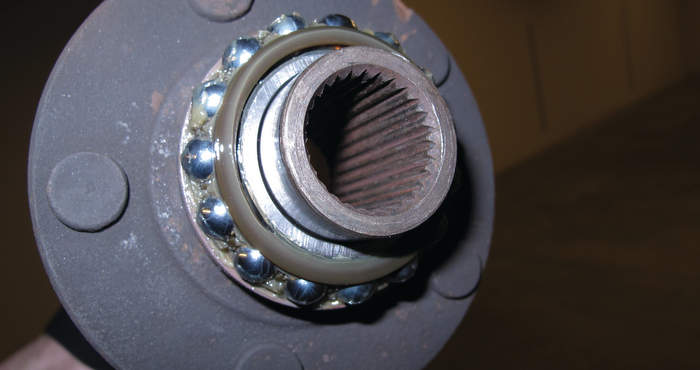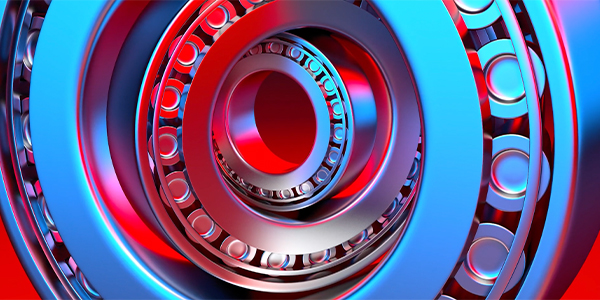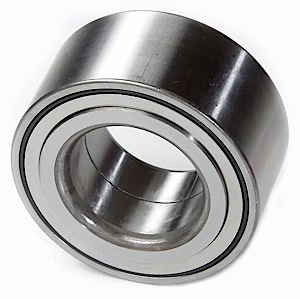 More and more vehicles are being equipped with cartridge-style wheel bearings — a style that requires a lot more labor to replace when compared to hub units or tapered roller bearings.
More and more vehicles are being equipped with cartridge-style wheel bearings — a style that requires a lot more labor to replace when compared to hub units or tapered roller bearings.
What’s new? What should you watch for? While the fundamentals of the job have not changed since the 1980s, what has changed is the complexity of the knuckle and the bearing seals.
Inspection
Noise is still the main indication of a bad bearing. Bearing noise will change as the vehicle is turned and the bearing is loaded. As a rule, there should be no perceptible play in the cartridge-style wheel bearing, but a bad wheel bearing will make little noise. Instead, the symptom of a worn bearing will manifest in the form of an erratic wheel speed sensor signal or a wheel speed sensor code in the ABS module.
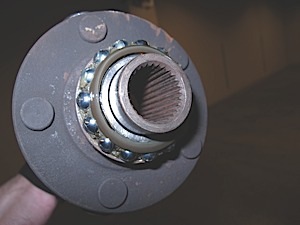 Removal
Removal
Removing a cartridge-style wheel bearing is not an easy task. Pressing out the bearing requires significant disassembly and force.
The main precaution is not to use an impact to remove the axle nut because an impact on some vehicles can damage the needle bearings on CV joints. While an impact may not seem as powerful as the engine, if the suspension is at full droop, the angles of the joint could damage some of the delicate surfaces. Also, the rattling caused by an impact is not good for the differential.
Treat the wiring harness of the wheel speed sensor with care when you remove the wheel speed sensor.
Knuckle &
Axle Inspection
Once the old bearing has been removed, take the time to clean and inspect the bearing bore and the surfaces of the axle that make contact with the bearing. Any debris or imperfections can prevent the bearing from seating properly and prevent the pre-load from setting properly.
Check the bore for roundness using a snap bore gauge. The gauge should rotate in the bore easily. Any distortion in the bore can cause a new bearing to fail prematurely.
Installation
When you pull the new bearing from the box, you will notice the bearing is difficult to turn. This is normal. The grease in the new bearing is designed to be thicker during transport to prevent balls or rollers from rubbing on the races and causing surface damage. As the bearing heats up after installation, the solids in the grease melt and change.
When pressing in the new bearing, make sure the adapter does not come in contact with the seal, and make sure the seal with the tone ring faces inward.’
When pressing the bearing into the bore, make sure it is not cocked or misaligned.
Killed by a Curb
The reason most bearings fail is twofold. First, a significant impact can cause the balls to make a mark in the outer race. When a vehicle hits a curb, pothole or other object in its path, the force is transferred to the small surface area of the bearing. The impact may cause damage to the races and the rollers/balls. This damage is called brinelling.
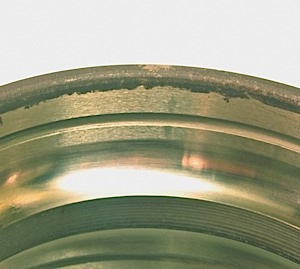 Brinell marks may or may not cause the bearing to make noise immediately, but, as the marks keep rotating, they will damage the entire bearing. If the impact is great enough, the pre-load on the bearing could change. This leads to runout and endplay.
Brinell marks may or may not cause the bearing to make noise immediately, but, as the marks keep rotating, they will damage the entire bearing. If the impact is great enough, the pre-load on the bearing could change. This leads to runout and endplay.
This damage can also cause hot spots that destroy the grease in the bearing. When the extra play and lack of grease work together, the condition of the bearing can rapidly deteriorate. This eventually causes noise and failure.
On the cartridge-style bearing, look to the condition of the seals for evidence that the pre-load was destroyed. On the inner seal, the balls will impact the seal, and the reluctor ring on the outer seal will show signs of heat damage. When the ring separates from the rubber material, the wheel speed sensor stops working. The tone ring is magnetic and can be detected using a card that locates the permanent magnets in the seal.
 More and more vehicles are being equipped with cartridge-style wheel bearings — a style that requires a lot more labor to replace when compared to hub units or tapered roller bearings.
More and more vehicles are being equipped with cartridge-style wheel bearings — a style that requires a lot more labor to replace when compared to hub units or tapered roller bearings.  Removal
Removal Brinell marks may or may not cause the bearing to make noise immediately, but, as the marks keep rotating, they will damage the entire bearing. If the impact is great enough, the pre-load on the bearing could change. This leads to runout and endplay.
Brinell marks may or may not cause the bearing to make noise immediately, but, as the marks keep rotating, they will damage the entire bearing. If the impact is great enough, the pre-load on the bearing could change. This leads to runout and endplay. 
